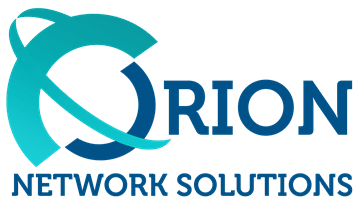Washington DC Computer Help By Orion Networks
- A hybrid workforce is likely here to stay for those industries that can achieve it. This includes the IT industry because most work can be done remotely and through video calls.
- For some industries, the adoption of these hybrid models has increased the need for IT specialists to address challenges faced by the remote workforce.
- Demands are in relation to improved data security and IT capabilities.
Although the world is recovering from the COVID-19 pandemic, many of the elements we used to mitigate the stay at home orders, yet keep our businesses afloat was the adoption of a hybrid workforce. This means that we have started having as many people as possible working from home. At first, we had a lot of hiccups as companies that weren’t used to this type of model, but where there are benefits, there are also issues that need IT support.

Delays in Returning to Work
Most plans to return to work in the office were made for the third to the fourth quarter of 2021. The holidays and other issues morphed these plans to return to work in January 2022 and later. Part of the problem in returning to work has been spiking in COVID-19, leading to a decreased willingness to risk employees, and, instead, companies have often begun mitigating the problems with their hybrid and remote work models. Some reasons for continuing these models are the cost savings companies have enjoyed, so return to work may not even be acceptable in the same capacity as it was before. So, the target dates for returning to work are entirely disappearing in some cases and to provide support for hybrid solutions, which may have an upfront cost, but yield massive savings. A common, but informal, the rule has been to use the hybrid model when it makes the most sense.
Phasing in office returns is a pressing challenge still faced by many companies, even at the end of the first quarter of 2022. In fact, in most industries, it’s been noted that the norm of part-time in-person employees and part-time remote employees has led to more challenges than were faced by the first part of the pandemic with the shut-downs prompting fully remote workforces.
The Need for a Solitary Solution
Faced with the myriad of challenges of a hybrid workforce model, many companies are willing to pay for a single solution that provides needed resources and tools to all employees, regardless of location or device used. Referring back to the COVID-19 surges, it has been seen that in-person employment has been up and down as the pandemic continues and this is expected to continue as mask mandates are continuously reevaluated. However, it is also acknowledged that the implementation of, maintenance of, and improvement of a hybrid model is of increasing importance for companies in most industries.
Hybrid models are escalating in many industries, but more IT support is still needed. At the same time, the hybrid model has been acknowledged as being the single most important solution to continuing to operate in the business world and accomplish short-term objectives as they work to find long-term solutions. The top concerns are often having the best video conferencing capabilities, data security, signing capabilities, and real-time collaboration.
Resolving Challenges
Most companies have problems with communication. However, by investing in remote technologies, many companies have experienced improvements in communication barrier issues. As a result, having more ways to communicate is likely something that is here to change, even if we do go back to a complete in-person workforce.
So, it’s been acknowledged that technology is a major driver of attracting and retaining talent. It’s necessary to not only think about what the company needs, but what the employees want/need, and how this can all be linked to meet the needs of customers in the most effective way possible. When engaged in a talent war that spans across continents, instead of just locally, these concerns aren’t easily resolved and are likely to involve many different variations of the hybrid work model.
The pandemic has literally forced many industries and companies to commit to a digital transformation in order to stay in operation. Moreover, employee expectations have changed and there has been a need to change productivity definitions to accommodate the changing workforce, including that of collaboration, in order to drive the success of all employees — all in a flexible way.
“We were searching for a dedicated IT Service in Virginia, where we were setting up a new office. After quite a search, I and my partner found Orion Network Solutions. Since we were a small business and starting a new office in the region, we needed someone with deep knowledge and also, who doesn't charge as much. These guys were like a blessing in disguise that helped us with each and every IT-related service. Thanks to their dedicated team of IT service. I personally recommended them to my close friends.”
Focus on Current and Needed Technology to Create an Effective Hybrid Model
Much decision-making activities are based on minimizing costs while getting the most needed benefits. Adding in that there are many platforms and applications, it can be easy to overlook what you’ve already got in place to build the model that you need in today’s environment. It may be as simple as beginning by unlocking the full potential of the programs and tools already held by the company, which can lead to increased and more secure collaboration, reduced errors, improved productivity, and more secure knowledge sharing.
But, having the tools alone are not solutions. Companies must consider how users will use the technology to develop a clear solution. Users include employees and clients. Part of the solution will require the implementation and use of artificial intelligence tools and the cloud. This will help lead to improved security in data storage and document transmission.
By combining existing and new tools, companies will be able to create solutions that are compliant, drive efficiency, and promote the adoption of the new work models being created. By adopting a partner strategy and working with a trusted IT company, such as Orion Networks, it is possible to develop solutions that are consistent, including cutting-edge technologies, and secure case management systems. We can help you develop the most effective solution to meet your needs based on your industry, employee need, and client need. Solutions are not just for short-term objectives, but also for long-term objectives. To see how Orion Networks can help you with your hybrid work model, contact us and we’ll talk about what we can do for you.










